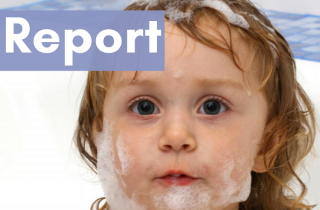Work and Breast Cancer

At a Glance
We reviewed 142 studies on women’s jobs and workplace exposures.
We found evidence that work as flight attendants, physicians and nurses, retail and sales associates, teachers, hairdressers and cosmetologists and production workers may be linked to increased risk of breast cancer.
Furthermore, some workplace exposures, such as ionizing radiation, night-shift work, solvents, pesticides and sedentary work are also linked to breast cancer.
Online Access
Read the full papers published in the journal New Solutions.
Work and Female Breast Cancer: The State of the Evidence, 2002–2017
Work and Breast Cancer: Recommendations to Address Research Needs
Translations
What we did
We conducted a scoping review of peer-reviewed scientific literature related to breast cancer, work, and workplace exposures. A scoping review is a systematic process to identify research related to a topic from multiple disciplines and methodological approaches. We limited our search to articles published between 2002 and 2017 and referenced in the publication database PubMed. Our initial search terms revealed over 11,000 articles. After a process of screening their titles, and then abstracts for relevance, our review included 142 articles.
What we found
Occupation and breast cancer
Several occupations were linked to increased risk of breast cancer in multiple studies. These included:
- Agriculture
- Clerical work
- Flight attendants
- Medical and Healthcare professions, including physicians and nurses
- Production workers, in sectors such as auto plastics, canning, and metal-working
- Retail and sales
- Service jobs
- Teachers
- Hairdressers and Cosmetologists
Workplace exposures
Several workplace exposures were linked to increased risk of breast cancer.
- Night-shift work is one of the most well-studied exposures. Long-term night-shift work and working night-shifts at younger ages may be of particular concern.
- Ionizing radiation is also linked to increase risk of breast cancer. As is the case for the broader literature on ionizing radiation, earlier life exposures appear to confer the greatest risk.
- Chemicals used in the workplace may also increase risk of breast cancer. Solvent exposure appears to be linked to breast cancer, especially for premenopausal breast cancers and for estrogen-receptor negative/progesterone-receptor negative (ER-/PR-) breast cancers. Some pesticides, such as terbufos, methyl bromide, malahion, chlordane and 2,4-D have been associated with increased risk in some studies. Other chemicals, such as ethylene oxide, PCB’s, chlorinated compounds, and metal-working fluids have also been linked to increased risk.
- Other work characteristics, such as job stress, long work hours, and sedentary work are also linked to increased risk of breast cancer, while workplace physical activity is protective.
- Data is non-conclusive regarding exposures to non-ionizing radiation and passive smoking.
Limitations of the research
A second paper explored the methods of the 142 papers we reviewed. We found that many studies were not able to measure or account for other important risk factors for breast cancer, such as menopausal status, family history, body mass index, smoking use and alcohol consumption, and in some cases reproductive history.
Further, fewer than 20% of papers examined risk of different subtypes of breast cancer. Many of the studies that did include this as a measure found risk was elevated for one subtype but not another subtype.
Most studies did not include details about participants’ race/ethnicity, socioeconomic status, age at exposure or when they began to work in a particular field.
Finally, only one study included workers in the design of the study, even though worker engagement in research studies can help inform study questions, exposure assessment, and report-back to participants.
We need more research
We need more research on women’s work and workplace exposures as they relate to breast cancer. It is particularly important that this research includes women from different racial and ethnic backgrounds, that it assesses exposures from jobs held in the teens and early adulthood, that it examine the risk of different breast cancer subtypes as well as the risk of pre- and post-menopausal breast cancer, and where possible, that actual exposures are measured.
Furthermore, increasing the inclusion of workers in the study design can help to create studies that are more relevant to workers’ concerns, that gather better data about exposures, variable job activities, and that create the potential for workplace changes.
Finally, the association of a given occupation with increased risk of breast cancer, does not provide information about why that occupation may increase risk. Workers in many occupations are exposed to multiple chemicals, ionizing radiation, sedentary work, and occasional or routine night-shift work. Research to explore workplace exposures can help increase this understanding.
And stronger policies to protect worker health
Workplaces should actively engage the Hierarchy of Controls to reduce exposures. This means eliminating harmful exposures first, using inherently safe processes, and using protective equipment where no other options exist.
Workplaces should monitor exposures to chemical, night-shift work, and ionizing radiation exposure. Occupational Safety and Health Administration policies are often inadequate for chemical exposures and may lack effective enforcement. Workplaces should actively strengthen workplace health policies to be stronger than OSHA requirements.




